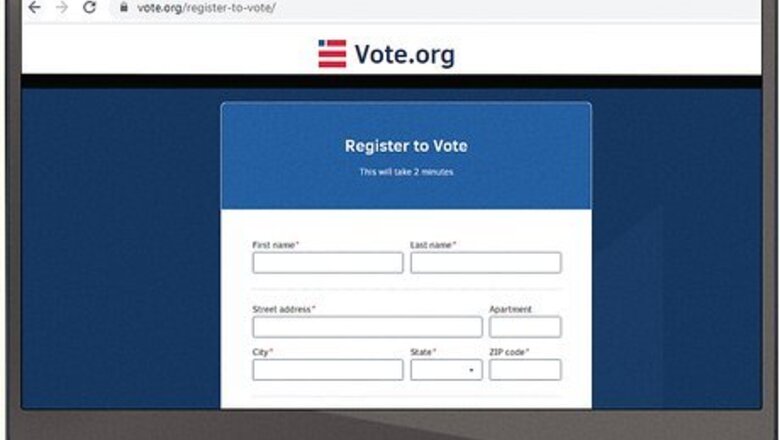
views
Voting by Mail
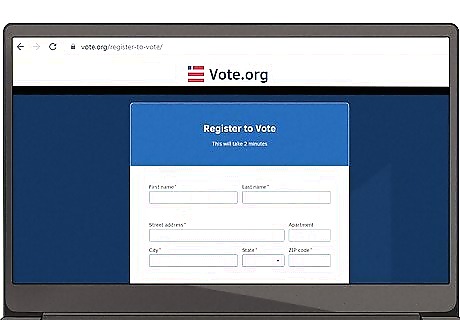
Register to vote. If you want to vote—in person, absentee, or otherwise—you’ll need to be registered. As of September 2022, 42 states allow citizens to register to vote online, and every state has printable voter registration forms online that can be mailed in or dropped off at your local election office. Find out your state’s rules at https://www.vote.org/voter-registration-rules/. If you would like to register, simply go to https://register.vote.org/ to get started. Make sure that you register within the deadline, which is usually 15-30 days before an election, although some states have Election Day voter registration. You can see a list of deadlines at https://www.vote.org/voter-registration-deadlines/.
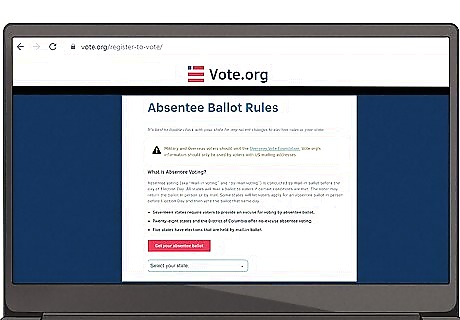
Make sure that you are eligible to cast an absentee ballot. All states will mail a ballot to voters if certain conditions are met. In 35 states plus the District of Columbia, a voter needs no special reason to cast an absentee ballot. This is called “no-excuse” absentee voting. In no-excuse absentee voting states, as long as the voter is registered by the deadline, they are eligible to cast an absentee ballot. In 17 other states, a voter needs a special reason to vote absentee. These reasons can be more or less restrictive depending on the state, ranging from old age or infirmity to having to work, and the voter will have to determine whether they fit into an eligible category. Five states have elections that are held entirely by mail-in ballots, so all voters will receive a ballot to vote by mail. You can see where your state lines up at https://www.vote.org/absentee-voting-rules/.
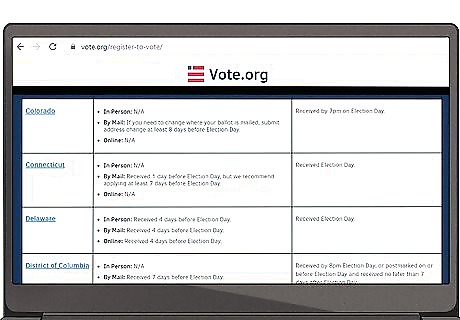
Check your state’s deadline to request an absentee ballot. Each state sets their own deadlines for when you have to request an absentee ballot, and deadlines may vary depending on how you request it. Check your state’s deadlines at https://www.vote.org/absentee-ballot-deadlines/. Make sure to send in your request as early as possible to make sure you get the ballot in time to vote.
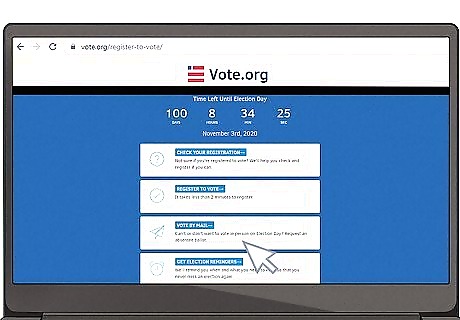
Request an absentee ballot. If you are registered and eligible, your next step is requesting the ballot. The easiest way to request an absentee ballot is by going to a website like https://www.vote.org/. If you enter your address, they’ll guide you through the process, whether your state allows you to request the ballot online or requires you to print and send in your request by mail. They’ll also provide the proper return address and any deadlines associated with getting your ballot in on time. If you are mailing in your absentee ballot request, make sure to provide proper postage. Each state has different types of Voter ID laws. Keep in mind that the ID requirements may be different if you’re voting absentee instead of in-person, or if you’re voting for the first time. You can research your state’s Voter ID laws at https://www.vote.org/voter-id-laws/.
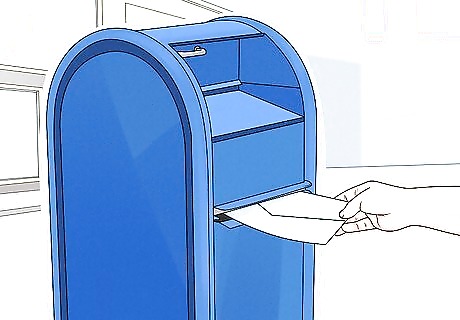
Complete your ballot and mail it in. Once you have received your ballot, fill it out, seal it, and mail it to the address provided with your ballot. Make sure that it is properly signed, sealed, within the proper deadlines, and has any necessary postage. These rules vary from state to state, but will be clearly indicated on your ballot. Keep in mind that the deadline may be for the postmarked date or date received, depending where you live. Check your state’s rules and be sure to get your ballot in as early as possible. Certain states may also allow you to vote in person even if you requested and received an absentee ballot. Check your state’s rules or contact your local election official to find out if this applies to you. Learn more at https://www.usvotefoundation.org/vote/eoddomestic.htm.
California, Colorado, Hawaii, Nevada, Oregon, Utah, Vermont, & Washington
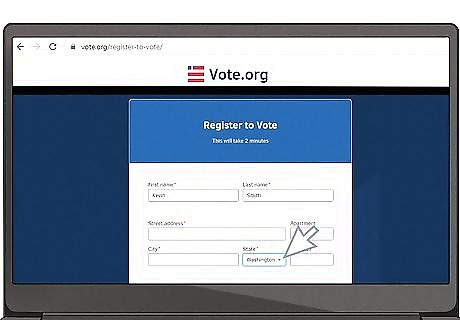
Register to vote. Eight states currently conduct all-mail elections and send a ballot to every voter in the mail (note: only general elections in Vermont are all-mail elections). Before you can get a ballot mailed to you, you have to register. All eight states allow you to register online, but may have different ID requirements. Check your state’s voter registration rules and deadlines at https://www.vote.org/voter-registration-deadlines/ and your state's voter ID requirements at https://www.vote.org/voter-id-laws/. If you want to register to vote in any of these states, you can go to https://www.vote.org/register-to-vote/ to get started or visit your state election office website.
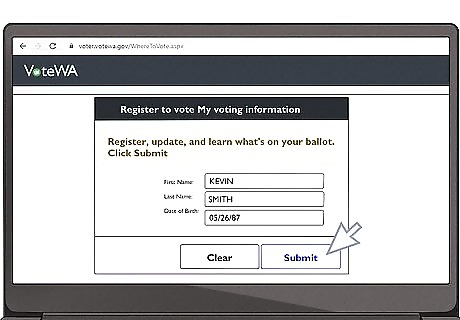
Make sure your registration is up to date. Verify your information is correct at least a month before the election. Check your registration status at https://www.vote.org/am-i-registered-to-vote/. Update your registration information at the appropriate site, making the appropriate changes as needed. California: https://www.sos.ca.gov/elections Colorado: https://www.sos.state.co.us/pubs/elections/vote/VoterHomeMobile.htm Hawaii: https://olvr.hawaii.gov/ Nevada: https://www.nvsos.gov/sos/elections/voters Oregon: https://secure.sos.state.or.us/orestar/vr/showVoterSearch.do? Utah: https://secure.utah.gov/voterreg/login.html?selection=UPDATE Vermont: https://sos.vermont.gov/elections/voters/ Washington: https://voter.votewa.gov/WhereToVote.aspx
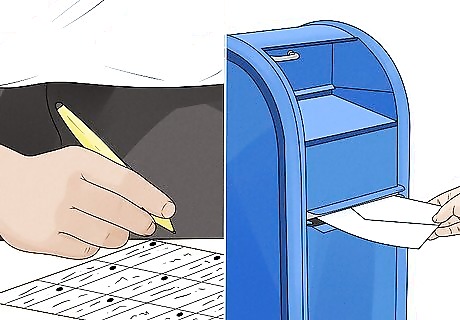
Complete your ballot and return it. Once you receive your ballot, carefully read and follow the instructions, making sure to sign and date where indicated. Each state gives voters several options to return their ballots. All mail in ballots come with a pre-addressed return envelope enclosed. The voter can send the ballot back by mail, or your state may allow you to drop off your ballot at certain locations like drop-boxes, vote centers, or polling places. The ballot will come with two envelopes, a pre-addressed envelope and a security envelope. Sign the ballot, seal it in the security envelope, and then enclose the security envelope inside the pre-addressed envelope. Check if postage is required on the envelope before dropping it in the mail. Check your state’s deadline to receive absentee ballots. Keep in mind that certain states require the ballots to be postmarked by a given date, and others require that ballots are received by a given date. Find your state’s deadlines at https://www.vote.org/absentee-ballot-deadlines/. Some all-mail voting states like Colorado still give voters the option of voting in person at a polling place. Should you choose to do so, you’ll need to bring your mail in ballot to the polling place to surrender it.




















Comments
0 comment